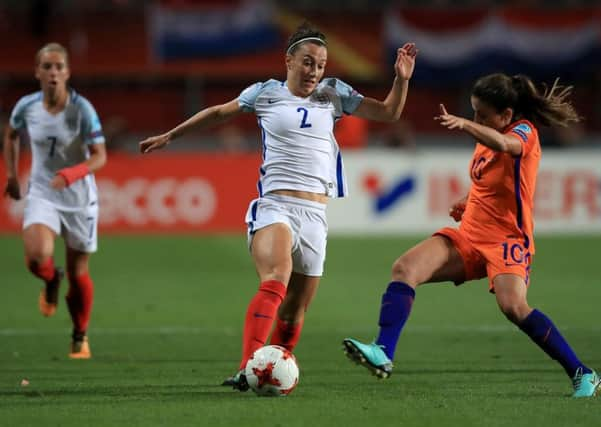Women's football heading for game-changing moment


In case it has passed you by this summer, women’s football is a big deal right now. The UEFA Women’s Euro 2017 tournament saw record numbers tuning in to watch the matches on Channel 4.
England may have lost in the semi-finals to Holland, who went on to win the tournament, but it drew the biggest-ever UK audience for a women’s football match of four million. The Lionesses, whose squad included former Leeds Beckett students Lucy Bronze and Jade Moore, smashed Scotland 6-0 in their opening game and Jodie Taylor scored the first hat trick by an English footballer since Gary Lineker in 1986. The quarter-final saw their first victory over France in 43 years.
Advertisement
Hide AdAdvertisement
Hide Ad“To see such powerful, athletic and talented women performing on an international stage is nothing short of inspirational,” says Lisa Pearce, chief executive of the London Football Association, the first woman to hold the position.
It’s an exciting time for women’s football – and not just professionally. In the face of dated stereotypes that sadly still hang around, the likes of captain Steph Houghton, Taylor and Bronze campaign tirelessly to grow the profile of women’s football and drive participation at grassroots level.
But if you were never encouraged to play football as a child, donning a full strip and jumping on a full-sized football pitch for 90 minutes of dribbling, tackling and heading a football might seem like a pretty alien concept.
Running for 90 minutes is always going to be good for anyone’s fitness, but the twists, turns, sprints, kicks and stop-start nature of the game have additional benefits. A 2010 study by Copenhagen University found football “provides a broad spectrum of health and fitness effects that are at least as pronounced as for running, and in some cases even better”.
Advertisement
Hide AdAdvertisement
Hide AdThere are nearly 6,000 women and girls’ football clubs at the moment and the FA are aiming to double that by 2020, and this year there’s a big push to make that happen through recreational football opportunities and at club level.
Lisa says: “Women’s football is the fastest growing sport in the UK in terms of participation for a reason and there’s no easier sport that you can pick up and play. Whatever age or ability you are, all you need is a football and a free bit of grass area, even in the privacy of your back garden, and you can get going on the basics of the game.”
Kelly Simmons MBE, the FA’s participation and development director, says the Lionesses are fully aware of their importance in promoting the sport. “They all want this generation of girls to play and we know we have to break down barriers.
“You very rarely see things you don’t want to see on the pitch – if they’re fouled, they get up straight away. If you were a parent, you’d think that’s a sport that has good values and ‘I’d like my daughter to play it’.”
Advertisement
Hide AdAdvertisement
Hide AdKelly says that now 96 per cent of primary school boys play football, compared to 41 per cent of girls. “It is a bit of a postcode lottery,” she says. “We have got girls’ football teams in primary and secondary schools, but it’s not universal.”
Kelly adds: “There are parents who still think football is for boys and we know there are girls who think, ‘I really like football, but it’s for boys’.” There’s been a lot of research into the barriers to girls playing football. But if we don’t get them by eight or nine, then they think, ‘It’s a boys’ sport’ or ‘I don’t want to make a fool of myself’.
“It’s about giving every girl the opportunity to play whatever sport they fall in love with, because we know there are a lot of girls who don’t do anything. And others are desperate for strong, positive role models.”
To find a women’s football club near you, visit www.thefa.com/womens-girls-football/get-involved.